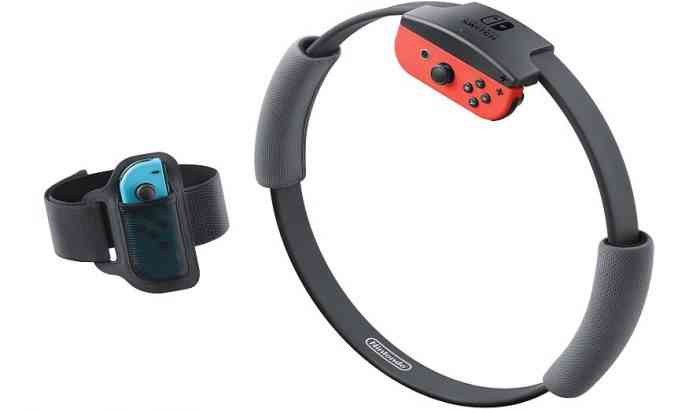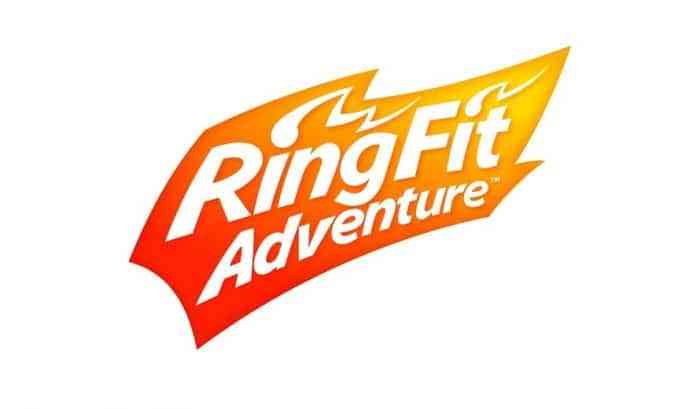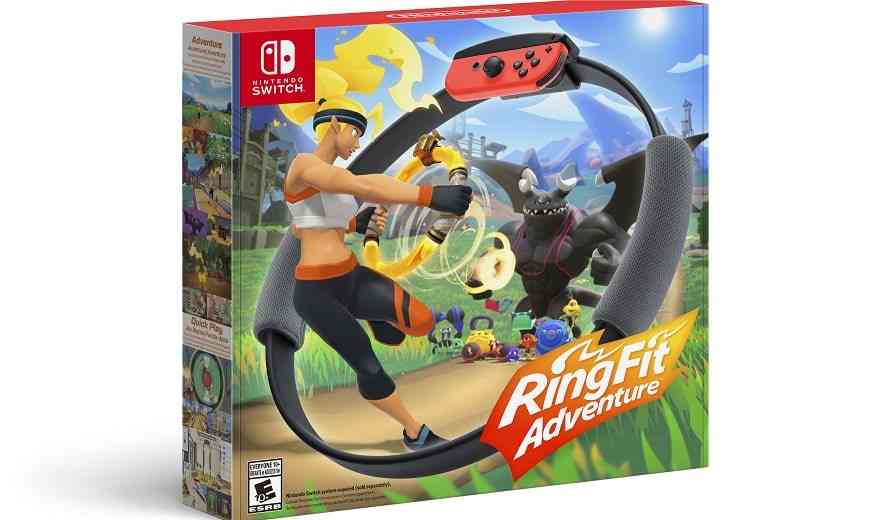Building Strong ‘Core’ Gameplay
Yesterday, your ol’ pal Zane got the opportunity to spend an hour with Ring Fit Adventure, courtesy of Nintendo. For a while now, pretty much every major console developer has taken a shot at fitness gaming. PlayStation’s Eye Toy, Nintendo’s Wii Fit Board, Xbox’s Kinect, and VR games often have low impact exercise, and now we have the Nintendo Switch’s Ring Fit Adventure. I’ve used a few of the above products and, to me, they usually missed the mark in some way. Either it was an interactive fitness routine, which lacks a fun game, or it was a game that does not achieve fitness goals the way it is intended. I was skeptical before trying out Ring Fit Adventure, and now I am not.

The way the Ring-Con works is that one Joy-Con is mounted on the ring and the other is strapped to your leg. The ring can be turned like a steering wheel to navigate the menus and squeezed or stretched to select or undo, respectively. Squeezing and stretching are also main gameplay inputs; Squeezing fires magic projectiles and stretching creates a vacuum to collect items.
Adventure Mode
The core of what I enjoyed about Ring Fit Adventure was that there were fundamental gameplay mechanics and reasons for me to put physical effort into it. The Adventure mode, which is like the campaign, has the player running on a track; I actually had to jog in place to move. Along the way there are boxes, signs, and other things to shoot and collect coins from, so there are small muscle contractions to do while jogging. There are also multiple elevations in the track to choose from by hovering and jumping. The terrain changes and with those changes come other demanding ways of navigating. For instance, when your character encounters a set of stairs, high-knee jogging is required. If you need to cross a river by paddle-board, you must use the Ring-Con in a paddling motion.
At different points in each track, there are battles. The battles are turn-based like Pokémon or Final Fantasy. The player has different attacks they can do which are powered by specific exercises. Doing sets of torso twists or squats, for example, would do damage to monsters. When enemies attack, you will be prompted to do a defensive stance by squeezing the Ring-Con between your hands and your abs.
After each track is cleared, your character gains experience points based on the monsters you fought, the exercises you did, the coins you collect; basically all the physical effort you put into the stage you get back in experience and your character levels up. As your character gains levels and you progress through the game, their strength and defense increase and the stages get progressively more difficult. The tracks will be longer which means you will have to run for longer, and enemies will be tougher which means you need to do more exercises to beat them. This is probably my favourite aspect of the game, which is that you grow with your character; you do not just get better at the game, you increase your physical stamina and work your body out as you play.

Quickplay
In Quickplay, the game is broken down into more focused activities. While Adventure Mode feels like a workout based game, the options in Quickplay can simply be a workout or a bunch of minigames, which I got to try out. The focused exercises have options of what part of your body you would like to work on. The game would then lead you through a series of workouts that focused on either your arms, chest, legs, etc,. Someone in my demo session tried it and they were very tired afterward. There are also customizable workout playlist that you can make. If there are certain exercises that work really well for you or that you want to work on, you can just queue them together and create your own routine. Unfortunately, I do not think these playlists can be shared online, at least not at launch.
The minigames are quite interesting as well. Like in the other modes, the minigames are completed by doing certain exercises. The games have actions and mechanics that align with those exercises; for example, in one of the minigames, a series of dummies move toward the player and they must twist their torso to use a staff to hit them away. Some of the dummies have shields on one of their sides, so the player must hit them in the right place. Another game is a pottery sculpting machine that moves up and down as the player squats, and shapes the clay as they press in on the Ring-Con. The game gives the player a shape they must make and points are given for how close to the design they got. Your ol’ pal Zane got 94 points out of a possible 100 (and that was apparently the hardest minigame, according to my demo supervisor), so I’m basically a fitness master.

Misc. Features
Another cool thing about this game is that there is a passive option that can be activated where while the Switch is in sleep-mode. If you’re watching TV or just hanging around your house, you can still do compressions on the Ring-Con and it will still record your activity, in a Fit Bit sort of way. I did not actually try that part, but I believe it.
When beginning and finishing sessions of Quickplay or Adventure Mode, the game will prompt you to warm up or cool down by stretching. The game will lead you through a stretch routine, but not actually force you to do it; the instructions are on the screen, but your stretches are not tracked. You can also choose to skip it entirely, but safety first, kids.
Also, this is not a negative comment or letdown, but in case you were wondering, Ring Fit Adventure really only works when the Switch is docked. Since the Joy-Cons are being used in the leg strap and Ring-Con, you cannot play this on the bus to work, plus you would need to let go of pretty much all social rules. It would be really cool if there was a VR setting for it. I’ll email Mr. Nintendo and see what we can work out, no pun intended.
In closing, I only spent about an hour with Ring Fit Adventure, but holy crap I was thoroughly entertained, impressed, and inspired to actually exercise with it. Nintendo graciously gave me a Ring Fit Adventure kit to take home, complete with the Ring-Con, leg strap, and the game software, but unfortunately, I don’t actually have a Nintendo Switch to play it on. Christmas is only a few months away though.
How have your fitness-gaming experiences been? Would you like to give Ring Fit Adventure a try? Let us know in the comments below.

